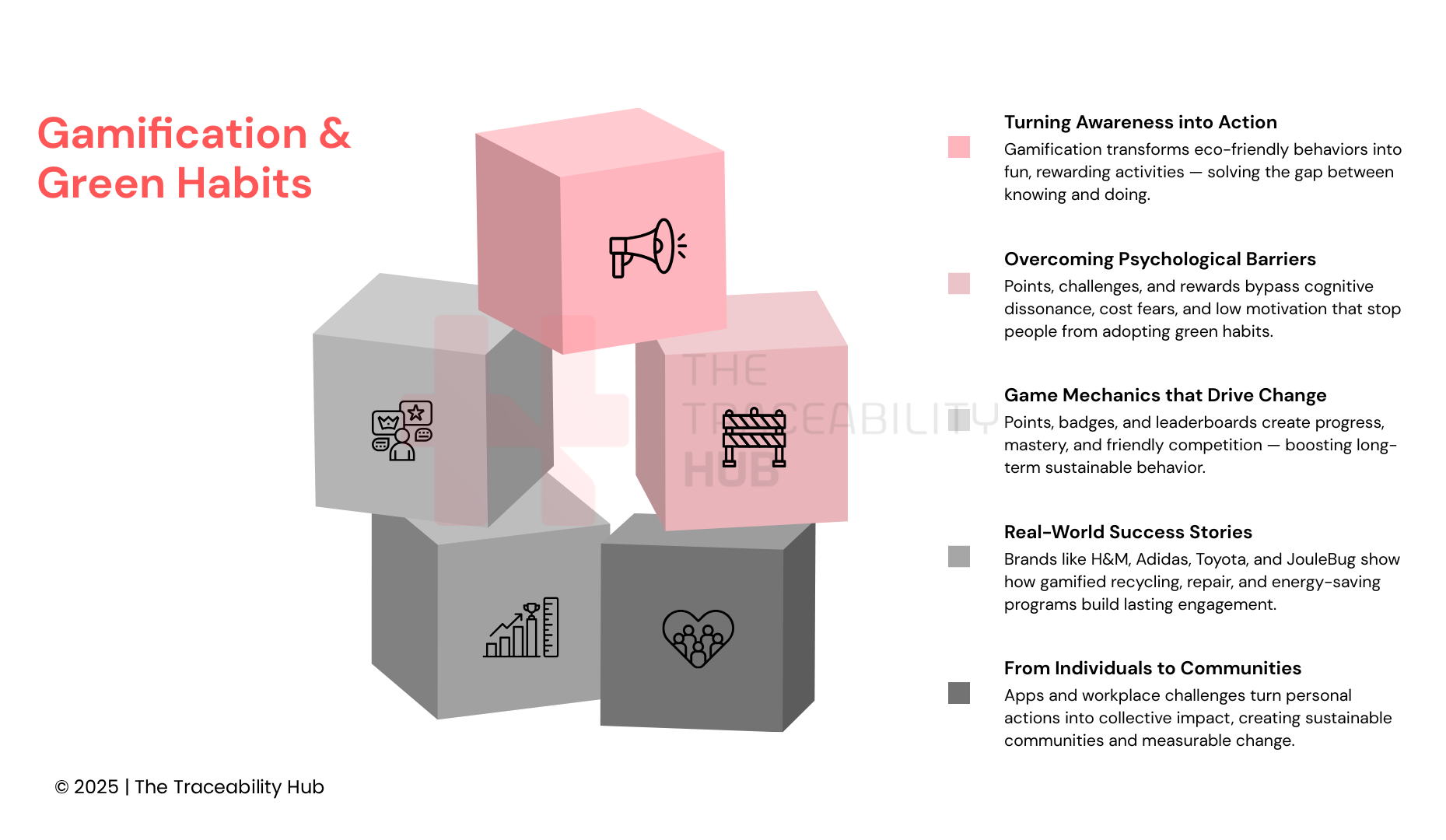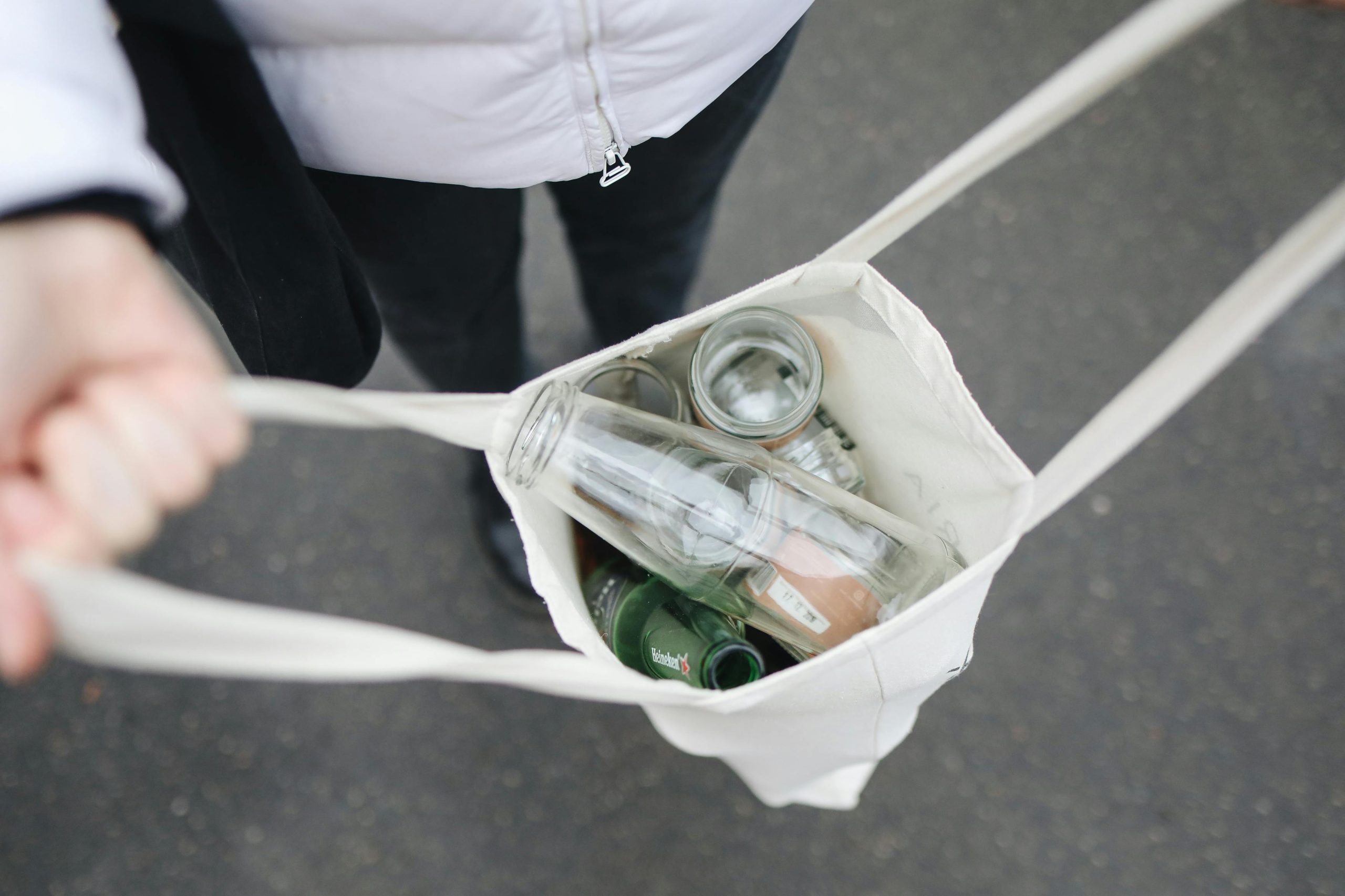Gamification Sustainability to Build Green Habits
Global waste will likely hit 3.4 billion tons by 2050, and gamification sustainability emerges as a creative solution to our environmental challenges. People care about environmental problems now more than ever, with 95% expressing concern, yet turning this awareness into daily action remains an environmental challenge.
Gamification of sustainability transforms ordinary eco-friendly activities into fun experiences. Points, badges, and friendly competition reward pro-environmental behaviors and create positive reinforcement that builds lasting sustainable habits. Users who participate in these systems develop a stronger commitment to corporate sustainability that goes beyond digital rewards. Business leaders recognize this trend, and 90% of them now see sustainability as crucial to their companies’ success.
This piece shows how environmental gamification turns everyday green choices into winning moves. The discussion includes ground applications, community uses, and future possibilities of this innovative approach.
Why Long-Term Sustainable Behavior Are Hard to Stick To
People find it hard to stick to eco-friendly habits even though they know more about environmental issues. The trip from understanding climate problems to making green choices every day remains tough for most people, whatever their original motivation.
The Challenge of Long-Term Sustainable Behavior
Our economic system clashes with green goals at its core. The system thrives on endless consumption and growth. People face constant pressure to buy more, which goes against green practices.
On top of that, cognitive dissonance creates a major barrier when people’s attitudes and beliefs clash. This happens when someone says they care about the environment but keep making choices that harm it. Internal conflict often leads them to give up sustainable green habits instead of fixing the contradiction.
Customers often do not do what they say: for example in the aspirational answers people say what they wish they would do (e.g., “I’d pay more for sustainability”) but act differently when faced with price tags.
There are also many social desirability biases: they respond in ways that sound good or acceptable, especially in surveys or interviews.
What they do depends on timing, mood, urgency, not just logic.
And they eventually have limited self-awareness: customers often don’t fully understand their own motivations or habits.
Climate change makes these challenges even harder because they’re complex and abstract. People see environmental problems as something far away that doesn’t affect their daily lives. This makes it tough to connect what they do with global effects. Green options also come with several roadblocks:
- Cost concerns: Green products cost more upfront
- Convenience factors: Green choices need extra work
- Time constraints: Green practices just need more time
Why Traditional Awareness Campaigns Fall Short
Studies show that giving people more information rarely changes what they do, and this reflects a well-documented behavioral bias known as the information–action gap, and it’s closely related to several cognitive and psychological phenomena (status quo bias, cognitive dissonance, confirmation bias, optimism bias, etc.).
Because emotion, context, and motivation drive behavior more than facts.
And designing for behavior change requires nudges, incentives, and frictionless alternatives, not just education.
A study of people living on Australia’s coast found that while most knew about protecting turtles, almost 65% did nothing to reduce light pollution. They blamed others, like businesses or streetlights, instead of taking action.
Traditional awareness campaigns don’t deal very well with deeper psychological and structural barriers. They give knowledge but no practical ways to act. This leaves people feeling helpless about huge global environmental problems.
These green campaigns also tend to reach people who already care about the environment rather than those who need to change their behavior. Too much information can make people numb. When they hear too many warnings, the message loses its effect and creates apathy instead of action.
This gap between environmental awareness and action shows why environmental gamification is a great way to get better results. They make green habits fun and rewarding instead of just telling people about problems.
Gamification & Green Habits

How Gamification Makes Sustainability Engaging
Green gamification turns eco-friendly behaviors into fun experiences and bridges the gap between environmental awareness and consistent action. This innovative approach uses human psychology to make green choices more rewarding and enjoyable.
What Is Gamification for Environmental Sustainability?
Gamification sustainability combines game design elements with non-game contexts to involve people in environmental goals. This technique adds game mechanics to sustainability activities and makes green practices interactive and appealing. The process turns sustainable behaviors into fun challenges instead of obligations and stimulates lasting participation in eco-friendly activities.
Sustainability gamification serves two purposes: it teaches people about environmental issues and their effects, and it promotes lasting behavior changes by encouraging pro-environmental behaviors. This approach stands apart from traditional awareness campaigns by involving users through interactive experiences.
The Role of Points, Badges, and Leaderboards
Successful gamification sustainability apps rely on these game mechanics:
- Points and rewards systems that track and acknowledge eco-friendly actions
- Badges and achievements that show progress and mastery
- Leaderboards that promote friendly competition or collaboration
These elements create a progression system where users earn recognition based on their sustainable achievements. Green apps like JouleBug show this approach at work by using simple game mechanics through badges and leaderboards. Players can share their eco-positive actions with friends.
Hedonic Motivation and Intrinsic Rewards
Psychological research proves brand gamification works through hedonic motivation, our drive to seek pleasure and avoid pain. Activities that meet basic human needs for autonomy, competence, and relatedness create intrinsic motivation toward pro-environmental behaviors.
Goal-framing Theory explains this success further. People take green actions when they meet three key objectives: they enjoy making eco-friendly decisions, they get benefits from sustainable choices, and they receive social recognition for environmental actions. Well-designed green gamification sustainability platforms meet these psychological needs and drive both immediate and long-term pro-environmental behaviors.
Real-World Examples of Gamified Green Habits
Companies of all sizes now use gamification sustainability strategies to make eco-friendly behaviors more appealing to consumers. These green gamification real-life applications show how game elements encourage environmental action with rewards, challenges, and interactive experiences.
Long-Term Sustainable Behavior: H&M’s Close the Loop Program
H&M started its garment collection initiative in 2013. The company became the first global fashion retailer to offer worldwide clothing recycling. Their innovative Looop system debuted in Stockholm stores and creates new fashion items from unwanted garments without chemicals and minimal water usage.
H&M’s loyalty club members pay 100 Swedish kronor (150 for non-members) to turn old clothing into new pieces. All proceeds support materials research. The company boosted participation by adding recycling games with augmented reality and Roblox experiences. Players earn rare elements for recycling clothes in-game, which mirrors the real-world discounts they get for in-store recycling.
Gamification Sustainability: Adidas Infinite Play Initiative
Adidas launched its Adidas Infinite Play program in the UK. Customers can return Adidas products bought in the last five years using the brand app. They receive gift cards and loyalty points based when they return Adidas products, with packages worth at least £20. The company either resells or recycles these items using innovative techniques. This game-like system turns green habits into a rewarding experience with points, badges, and challenges. Players stay motivated beyond one-time actions.
Behavior Change: Toyota Prius Eco Score System
Toyota’s Prius AWD-e comes with an Eco Score system that shows a score out of 100 on the car’s 7-inch digital display. The score looks at driving efficiency in three areas: Eco-Start, Eco-Cruise, and Eco-Stop. Drivers start with 100 points and lose them for inefficient actions like sudden acceleration or heavy A/C use. A perfect score needs smooth acceleration, gradual braking, and minimal A/C usage. This Toyota Prius Eco Score system makes fuel-efficient driving feel like a game.
Corporate Sustainability: JouleBug Sustainability Gamification App
JouleBug makes daily sustainable actions fun through its mobile platform. Users earn points and badges for eco-friendly actions like using energy-efficient lights or taking stairs instead of elevators. These points help users climb leaderboards and become gift cards, discounts, or donations. The JouleBug Sustainability Gamification app’s users cut their workplace energy use by 20% on average.
Corporate Sustainability: Volkswagen’s Bottle Bank Arcade
Volkswagen’s Fun Theory campaign created Volkswagen’s Bottle Bank Arcade to turn regular recycling into an arcade game. Users get points for putting bottles in lit-up holes. The lights flash faster as the game continues.
The results were impressive: more than 100 people used the arcade bin in one day compared to just two bottles in a regular bin nearby. The system collected over 100,000 bottles from more than 10,000 people in just one month.
From Individual Actions to Community Impact
Gamification makes sustainability a group effort that goes way beyond individual choices. People work together toward shared goals and create lasting changes in their communities.
Gamification in Workplaces and Schools
The same approach works greatly in workplaces and schools. Students who learned about saving water through games showed better habits even six months later. The same approach works in offices too.
DBS Bank created an exciting Star Wars-themed Eco-Cup Competition between departments that helped employees save more energy and recycle better. The research team found that offices using green games cut down their electricity use.
Building Sustainable Communities Through Apps
Apps can turn small actions into big behavior changes when whole communities get involved. JouleBug makes every day green habits fun by letting friends compete while seeing their environmental impact. Ecosia uses money from web searches to plant trees – they’ve planted over 200 million trees worldwide. Some other great platforms include:
- Olio helps communities share food and cut waste
- Commons track how purchases affect carbon footprints
- Earth Hero creates customized climate action plans
Gamification for Achieving Sustainability Trends and Future Scope
Research points to exciting possibilities despite some challenges. Games help tackle various sustainability issues, but we need more research about their long-term effects. The next steps focus on community-driven management, designing green games that work for different types of users, and finding ways to connect different areas of sustainability.
Gamification Sustainability an Effective Method for Encouraging Long-Term Sustainable Behavior
Gamification sustainability serves as a powerful tool to tackle environmental challenges. Points, badges, and leaderboards make every day green choices more engaging. These game elements tap into our basic needs for independence, skill development, and social recognition. Traditional awareness campaigns just inform people without motivating action, but gamification gets people involved in green practices and makes it fun.
The real-world examples demonstrate how businesses use game elements to build lasting green habits. Many companies show how this works in real life.
H&M gives rewards for recycling clothes. Adidas members earn points when they return items. Toyota’s Eco Score system turns saving fuel into an exciting daily challenge. These examples demonstrate how businesses use game elements to build lasting green habits instead of one-time actions.
Green gamification goes far beyond personal choices. When environmental goals become team challenges, workplaces, schools, and communities see major changes in behavior. Apps like JouleBug and Ecosia turn individual actions into measurable community results, which builds social momentum toward sustainability.
Some hurdles still exist for environmental gamification’s future. We need more research about its long-term success. The systems must work for people with different priorities. All the same, green gamification helps bridge the gap between knowing about environmental issues and taking regular action.
Most people know sustainability matters but find it hard to keep green habits in an economy that pushes consumption. Environmental gamification solves this biggest problem by connecting our natural drive for success with eco-friendly behaviors. Making green choices feel like winning moves could be one of our best ways to create lasting environmental change.
Coming soon: Wear Me 30 Times: How Gamification is Redefining Conscious Fashion






